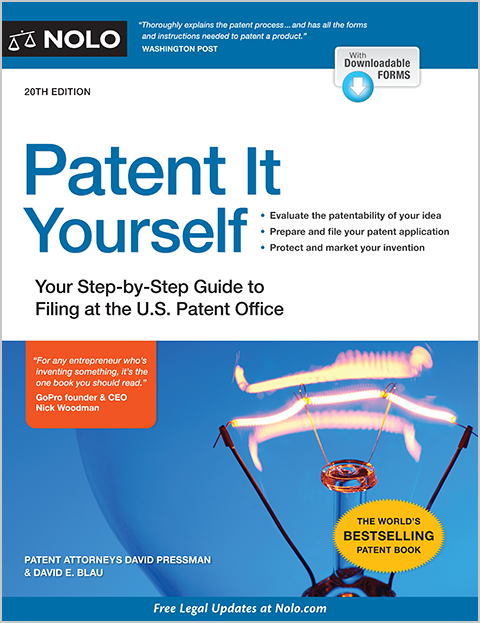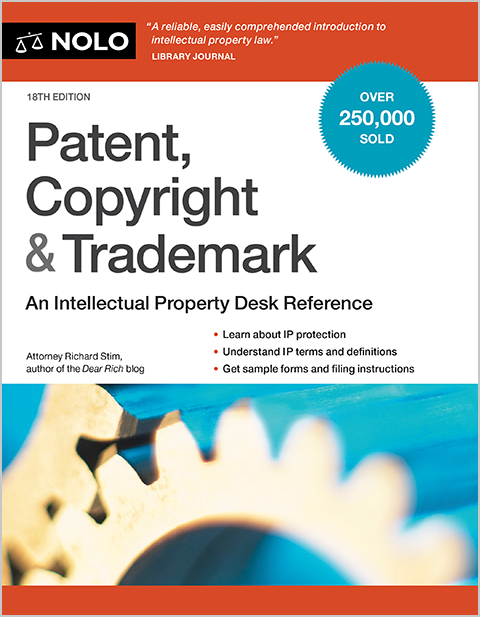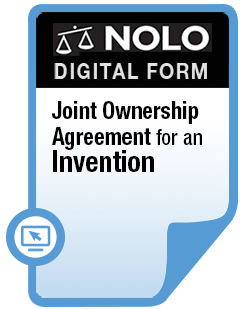Applying for a federal trademark has many complications. Learn the basics of registering a trademark.
Your brands—the names and logos you use on your products and services—are valuable business assets. In legal terms, your names and logos are trademarks, and you can protect them by registering them federally. In this article, we address common questions about trademark registration.
- What marks qualify for federal registration?
- What types of trademarks can't be registered?
- Do I need to do a trademark search before applying for a federal trademark?
- How do I apply for federal trademark registration?
- What happens after the USPTO approves my mark for registration?
- What are the Principal Register and the Supplemental Register?
- How long does federal trademark registration last?
- Can I file a trademark application without an attorney?
What marks qualify for federal registration?
To qualify for federal registration, your mark must:
- be used in interstate commerce
- be distinctive, and
- not conflict with any existing registered trademarks
Let's take a brief look at each requirement.
Use in interstate commerce. "Interstate commerce" means the mark must be used on a product or service that crosses state, national, or territorial lines. In other words, if you deliver your product or service only within one state, you can't get a federal registration for your mark. For physical products, the use-in-commerce requirement is met when you ship goods bearing the trademark outside your state. Merely advertising in other states isn't sufficient. For services, however, advertising in other states qualifies as use of your mark in commerce. A website that features the mark in conjunction with services qualifies as promotion. A website for physical products, though, must include the capability for customers to place orders on the site to qualify as use of the mark in commerce. In other words, it must be an e-commerce site.
Distinctiveness. The mark must do more than simply describe the product or service. For example, "Cold and Sweet" for ice cream or "Foreign Auto Repair" for a foreign auto repair service would be too descriptive—not distinctive enough—to qualify for registration. Neither identifies a source for the product or service, which is the primary purpose of a registered trademark.
No conflict with existing registered marks. Suppose someone has already registered a trademark that's the same or very similar to your proposed mark for goods or services that are closely related to yours. In that case, you'll face difficulty registering your mark. The acid test for two similar marks is whether the existence of both marks in the marketplace would likely cause consumers to be confused about which company is the source for which products or services. The more similar the marks are, and the more closely related the goods or services are, the more likely it is that consumers would be confused by the two marks. If there's a strong likelihood of confusion between your proposed mark and the other company's existing registered mark, the existing mark has priority and the USPTO won't register your mark.
What types of trademarks can't be registered?
Certain types of marks aren't eligible for trademark registration. The USPTO will not register marks on the Principal or Supplemental Register if the marks contain:
- names of living persons, unless they've given their consent
- the American flag
- other federal and local governmental insignias (such as federal department seals), and
- the name or likeness of a deceased U.S. President, unless their widow(er) has given their consent.
In the past, the USPTO refused to register marks that it deemed immoral, scandalous, or disparaging of a living or deceased person. The Supreme Court did away with those limitations in the cases of Matal v. Tam 582 U.S. 218 (2017) and Iancu v. Brunetti, 139 S. Ct. 2294 (2019). Matal involved a disparaging mark and Brunetti an immoral or scandalous mark. In both cases, the Court ruled that the USPTO's refusal to register the mark was an unconstitutional restriction of free speech.
The marks above can't be registered on the Principal or Supplemental Register. However, these Registers have different requirements. For example, you can't register descriptive or generic marks on the Principal Register, but you can register these types of trademarks on the Supplemental Register. (See more on the differences between the two registers below.)
Do I need to do a trademark search before applying for a federal trademark?
You're not required to do a trademark search before you apply to register a mark with the USPTO. In fact, a trademark examiner at the USPTO will search the USPTO's database as part of the application review process. The examiner will reject your trademark application if the search uncovers conflicting registered marks—marks that are the same as or confusingly similar to your proposed mark and are used on similar goods or services to yours.
So, why not rely on the USPTO's search? Why do your own search?
You should conduct your own trademark search before filing your application with the USPTO (and before you start using the mark in your business) for a couple of reasons. If another business has already registered the mark:
- you'll be infringing on that trademark if you use it on similar or related products or services, and
- you can't register the mark—the existing registered mark has priority.
The latter point is key. If you try to register a trademark that's the same or similar to another company's registered trademark for use on similar or related products, your application will be rejected. You'll be out the time and money that you put into filing your application (the nonrefundable application fee is $350 as of January 2025). Your loss will be compounded if you've already invested in the brand and you're forced to rebrand your company or product. Plus, using someone else's registered trademark could constitute trademark infringement, exposing you to a lawsuit and damages.
In other words, it's a good idea to do at least a basic federal trademark search before you start using a brand and certainly before you file for a federal trademark.
The most basic kind of federal trademark search is known as a "knockout" search or a "direct-hit" search. In a knockout search, you search for marks that are identical or almost identical to yours and are being used on goods or services in the same trademark class(es) as your product or service. You might want to do a more comprehensive search before you file a trademark application. But a knockout search is a good first step, one you can take without the help of a lawyer or trademark search service.
How do I apply for federal trademark registration?
You file your trademark application online with the USPTO Trademark Center. Trademark Center replaced the USPTO's long-standing Trademark Electronic Application System (TEAS). With the transition to the Trademark Center, the USPTO has also consolidated the two TEAS applications, TEAS Plus and TEAS Standard, into one Base application. As of January 2025, the filing fee for the Base application is $350 per trademark class (the previous fees were $250 per class for TEAS Plus and $350 per class for TEAS Standard). (Fees do change, so be sure to check the USPTO's trademark fee schedule for the most current fees.)
You apply for a trademark on one of two bases:
- a use-in-commerce basis, meaning that you're using the mark in commerce (also known as a Section 1(a) application), or
- an intent-to-use basis, meaning that you're not yet using the mark in commerce but intend to do so within six months of being notified that your mark has been approved for registration (also known as a Section 1(b) application).
If you're filing a use-in-commerce application, make sure you understand what constitutes use in commerce (see discussion above) and that the sample ("specimen") of your trademark that you submit with your application demonstrates the mark in actual use in commerce. If you're filing an intent-to-use application, be sure you read up on the requirements (including the deadline) for putting the mark into use (see discussion below). The USPTO won't register your mark until you demonstrate actual use in commerce.
Here's the information you're required to provide with your trademark application:
- information about the applicant
- the basis on which you're applying—1(a) or 1(b)—see discussion above
- the mark itself (for word marks, simply type the word; for graphic marks, you can upload an image)
- the date the mark was first used ever (not necessarily in interstate commerce)
- the date the mark was first used in interstate commerce (when you first used the mark to identify your products or services across state lines)
- a description of the products or services on which the mark will be used, including the trademark class (known as the International Class, or IC)
- at least one specimen of your proposed mark being used in commerce
- a signed declaration saying that the information in the application is accurate, and
- the registration fee.
The complexity of the trademark application process isn't so much in the mechanics of the USPTO system (although you need to pay attention to technical requirements, such as the types and sizes of your uploaded files), but rather in knowing how to present your mark to give it the best chance of being accepted. By "present the mark," we mean describing your goods and services to best fit your classification, determining what sample or samples best demonstrate use of the mark in commerce, and other decisions that help or hurt the chances of an application being accepted.
For more information about applying for a mark through Trademark Center, see the excellent training resources at USPTO.gov.
What happens after the USPTO approves my mark for registration?
When you submit a trademark application, your application will go through a multi-step process that hopefully ends in registration. In the first step, a trademark examiner is assigned to your application. The assigned examiner will review your application to determine if:
- your application is complete and sufficient (for example, the trademark owner information is appropriately filled out, and the specimens—the examples of your mark in use—are acceptable), and
- your trademark is distinctive enough to be registered and is not a prohibited mark.
If your trademark examiner at the USPTO determines that your mark qualifies for registration, the mark will be published online in the USPTO's Official Gazette. You've entered your application's 30-day opposition period when your mark is published in the Gazette. During this 30-day window, anyone in the public can oppose the registration of your mark if they believe that the registration will affect their own trademark rights.
If a member of the public believes that they would be harmed by the registration of your mark, they can file a notice of opposition within the 30-day opposition period. You then have 30 days to respond to the notice of opposition. The dispute will then be heard and decided by the USPTO's Trademark Trial and Appeals Board (TTAB).
If no one opposes your registration, your mark will be registered if you filed on a use-in-commerce (Section 1(a)) basis. If you filed on an intent-to-use basis and your mark is not opposed, the USPTO will issue a Notice of Allowance (NOA), meaning that your mark has been allowed for registration but has not been registered. The mark won't be registered until you demonstrate that you've started using the mark in commerce, which you do by filing a Statement of Use form. You have six months from the issuance of the NOA to file your Statement of Use, although you can request up to four six-month extensions, for a total of three years from the NOA.
What are the Principal Register and the Supplemental Register?
The USPTO maintains two trademark registers: the Principal Register and the Supplemental Register. The Supplemental Register is a secondary register for marks that don't qualify for registration on the Principal Register (usually because they're not distinctive enough). Registration on either register allows you to use the ® on your goods or services. But registration on the Principal Register conveys certain benefits that registration on the Supplemental Register doesn't, including:
- the legal presumption of ownership (which is important in a trademark infringement suit)
- trademark incontestability status after five years of continuous use (if you file a Section 15 Declaration of Incontestability), making the mark immune from most legal challenges, and
- the ability to use the U.S. Customs and Border Protection agency to stop importation of infringing goods.
Learn more about registering your trademark on the Supplemental Register.
How long does federal trademark registration last?
Unlike patents and copyrights, which have fixed terms, a trademark registration lasts as long as you continue to use the mark in commerce and comply with certain maintenance and renewal requirements. Examples of old trademarks that are still active include COCA-COLA (registered 1893) and LEVI'S (registered in 1928).
Once your trademark or service mark is registered on the Principal Register, the registration is good for an initial term of ten years. However, between year five and six of the mark's registration, you must file a Section 8 Declaration stating that the mark is still in use in commerce. If you don't file this declaration, then your registration will be canceled. At the same time you file your initial Section 8 Declaration, you can (and should) file a Section 15 Declaration of Incontestability. An incontestable mark is immune from certain legal challenges.
You can renew the original registration indefinitely for additional ten-year periods by filing both a Section 8 Declaration and a Section 9 Renewal Application. A Section 8 filing shows the USPTO that your mark is still in use while a Section 9 renewal application requests that the USPTO renew your mark's registration.
If you fail to renew a trademark, the USPTO declares the mark to be dead and you lose all the rights you gained through registration, including the right to use the ® symbol on the mark.
Can I file a trademark application without an attorney?
You can file a trademark application without an attorney. However, if you're an international applicant, the USPTO requires you to have a U.S.-based attorney or domestic representative.
Your choices are not limited to filing on your own or hiring a lawyer to do it for you. You can also turn to one of the many online trademark search and registration services that cater to small businesses, such as LegalZoom, Markify, or Trademark Express. Many of these companies offer affordable search-and-registration bundles.
A trademark attorney will cost you more than doing it yourself or using an online service, but the added expense can be worthwhile for many small businesses. An experienced trademark attorney can navigate the application process for you, from conducting a comprehensive trademark search for similar marks to preparing your application and responding to office actions. Trademark lawyers know how to describe a mark, what makes for a good sample to show use in commerce, and how to make an argument that your mark is sufficiently distinctive.
These days, most trademark attorneys offer search and registration services for a fixed fee. Most fixed fee packages fall in the $1,000-$3,500 range.
If you decide to handle your own registration, you'll find excellent tutorials and other resources on using Trademark Center at USPTO.gov.
Your application might not be accepted on the first try. You might need to respond to questions and objections from your USPTO examiner. These questions and objections come in the form of what the USPTO calls office actions.
Office actions can raise such issues as:
- similarity to an existing registered mark
- inadequate description of goods or services
- failure to demonstrate use in commerce, and
- lack of distinctiveness.
Many lawyers' fixed fee trademark packages include responding to one or two office actions. If you're handling the application yourself, you'll need to learn how to respond to office actions to address your examiner's concerns and make the case that the mark should be registered.
For more information on trademark law, including additional articles on trademark registration, click here. Also, check out the trademark FAQ webpage at USPTO.gov.
Talk to a Lawyer
Need a lawyer? Start here.
How it Works
- Briefly tell us about your case
- Provide your contact information
- Choose attorneys to contact you
- What marks qualify for federal registration?
- What types of trademarks can’t be registered?
- Do I need to do a trademark search before applying for a federal trademark?
- How do I apply for federal trademark registration?
- What happens after the USPTO approves my mark for registration?
- What are the Principal Register and the Supplemental Register?
- How long does federal trademark registration last?
- Can I file a trademark application without an attorney?
- Briefly tell us about your case
- Provide your contact information
- Choose attorneys to contact you



